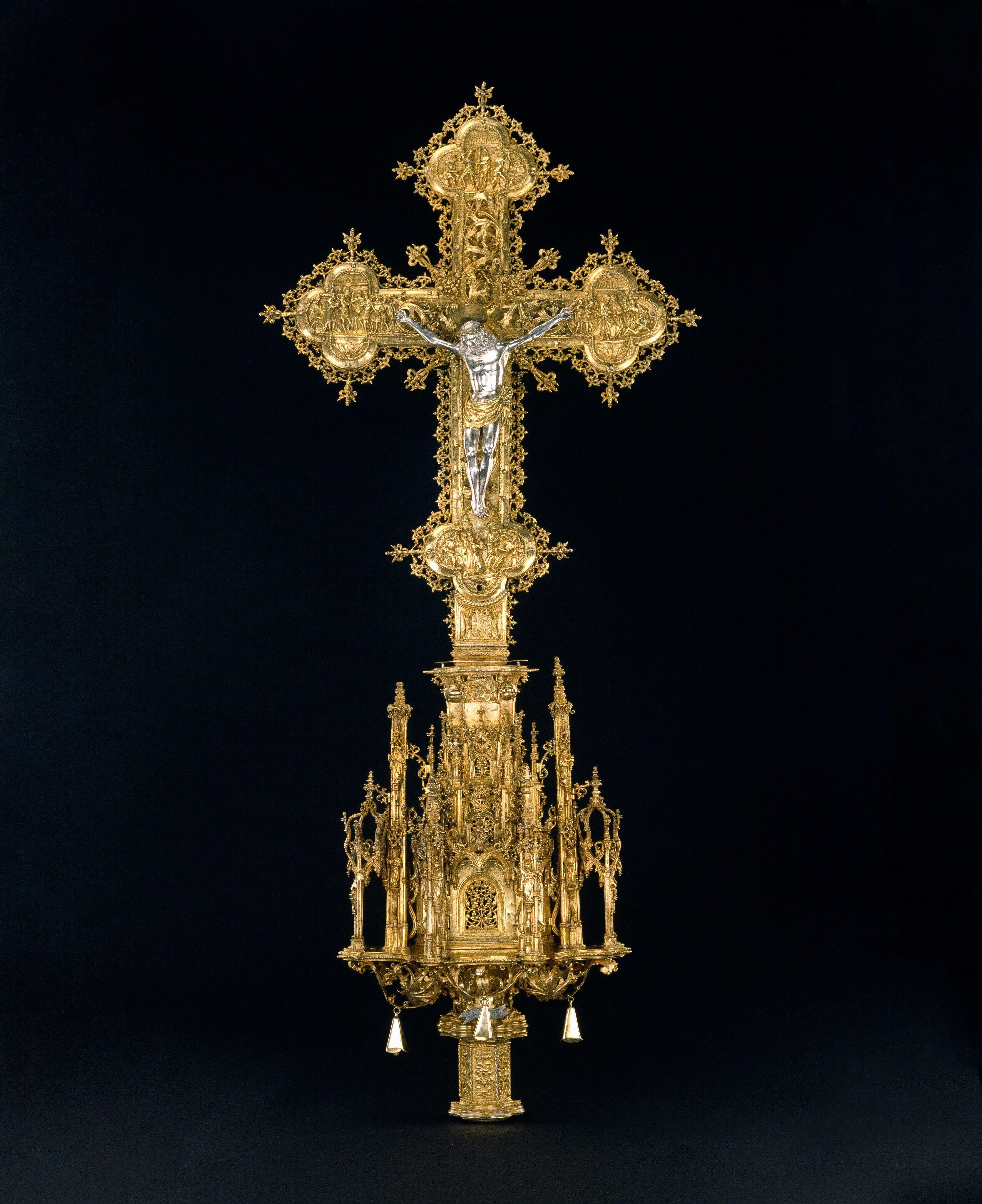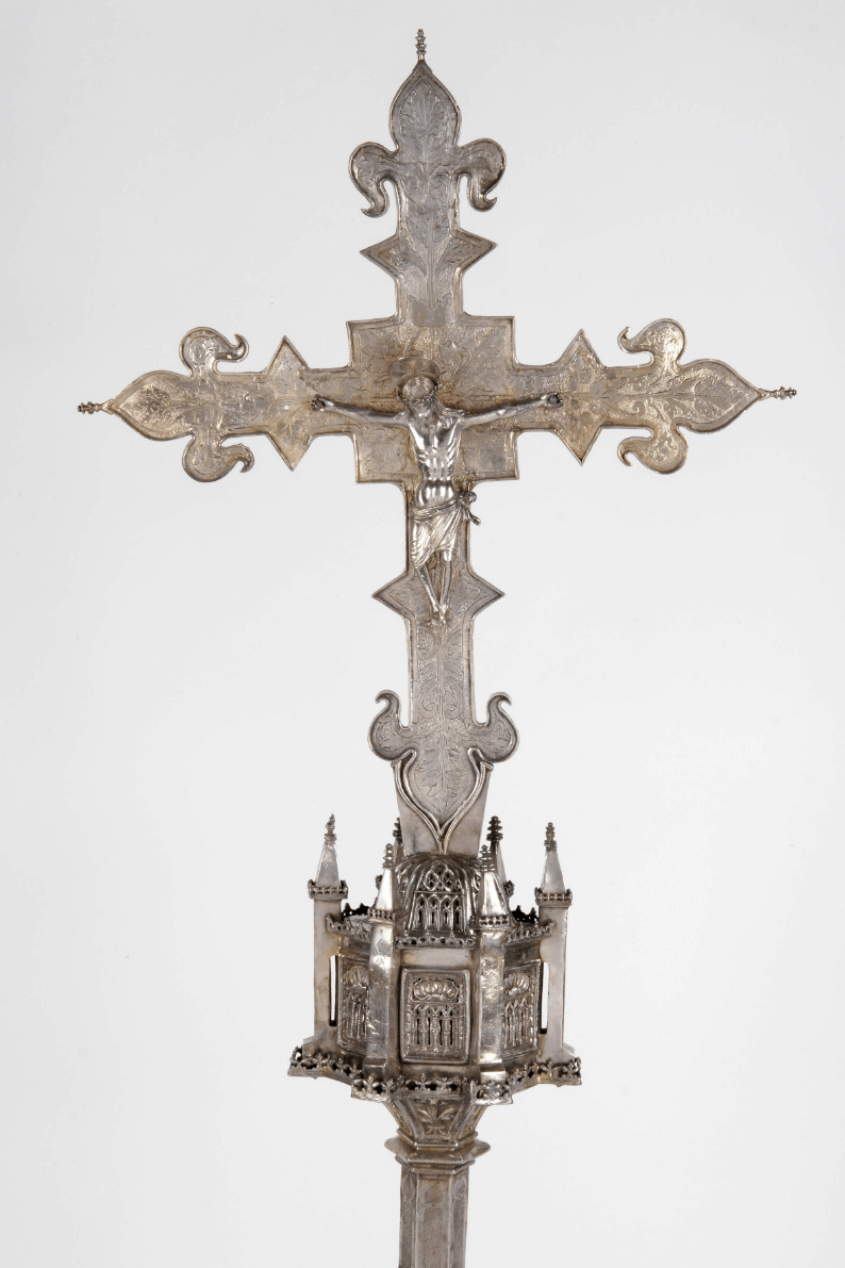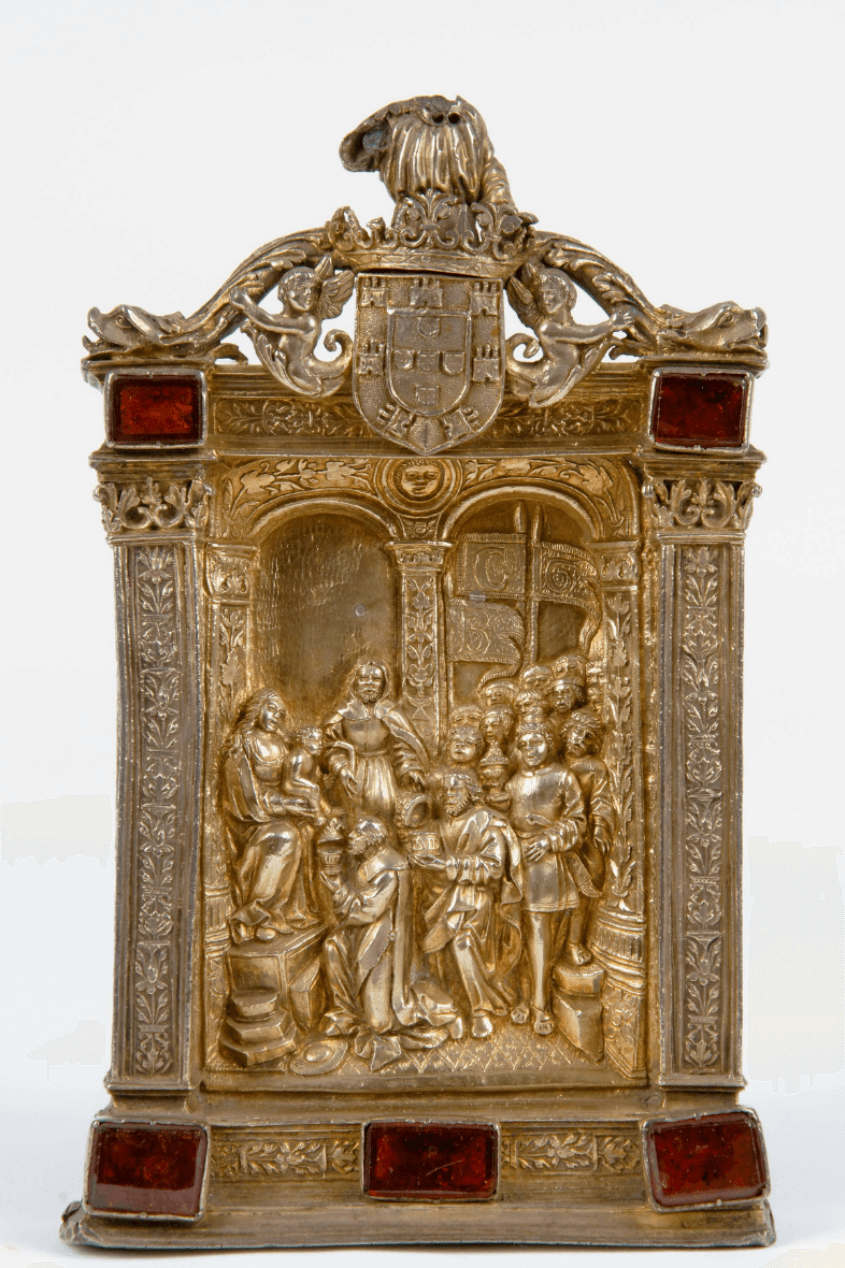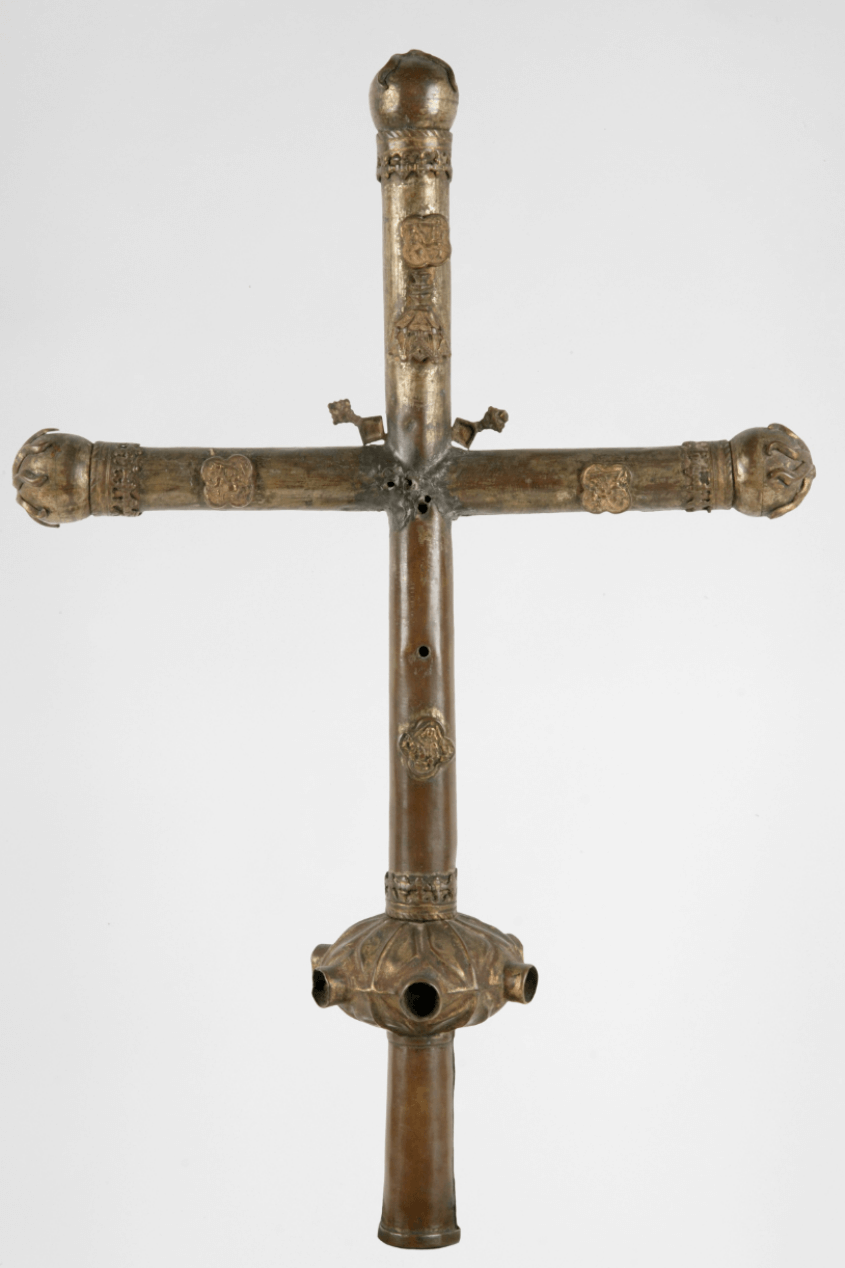Processional Cross
Portugal, Lisbon
1501 <> 1525
1501 <> 1525
The first liturgical vessels to be used in the “Grand Church”—later the Cathedral of Funchal, whose parish had been transferred to the new temple, blessed in 1508—must have been originally housed in Our Lady of Calhau Church. One can assume that they were already in use by 1517, when the Cathedral was consecrated. From the Cathedral’s 16th century treasure, commissioned by King D. Manuel I, four implements have survived—the Pax, the Aspersorium or Situla (Holy-water bucket), the Mace, and the Processional Cross. The original set, comprising 20 vessels, arrived in Funchal in 1528, after the King’s death in 1521. The Manueline treasure has had a long and eventful story, having survived the French buccaneers’ sack in 1566. The Processional Cross is an outstanding example of Manueline goldsmith’s work. It features the royal insignia—the Portuguese coat-of-arms and the armillary sphere—along with Late Gothic elements, apparent in the miniature cathedral on the knop of the cross. Ornate and decorative motifs derived from the imagery of Portuguese overseas expansion can be found here, combined with the artistic language of the Renaissance, apparent in the anatomical modelling of the human figures and in the depiction of narrative scenes with the employment of perspective.
MASF56
Gilded, chiselled and embossed silver
Dimensions: width: 55 cm height: 127 cm
Gilded, chiselled and embossed silver
Dimensions: width: 55 cm height: 127 cm
Commissioned by King Manuel I for the Cathedral of Funchal
SEARCH IN THIS COLLECTION



